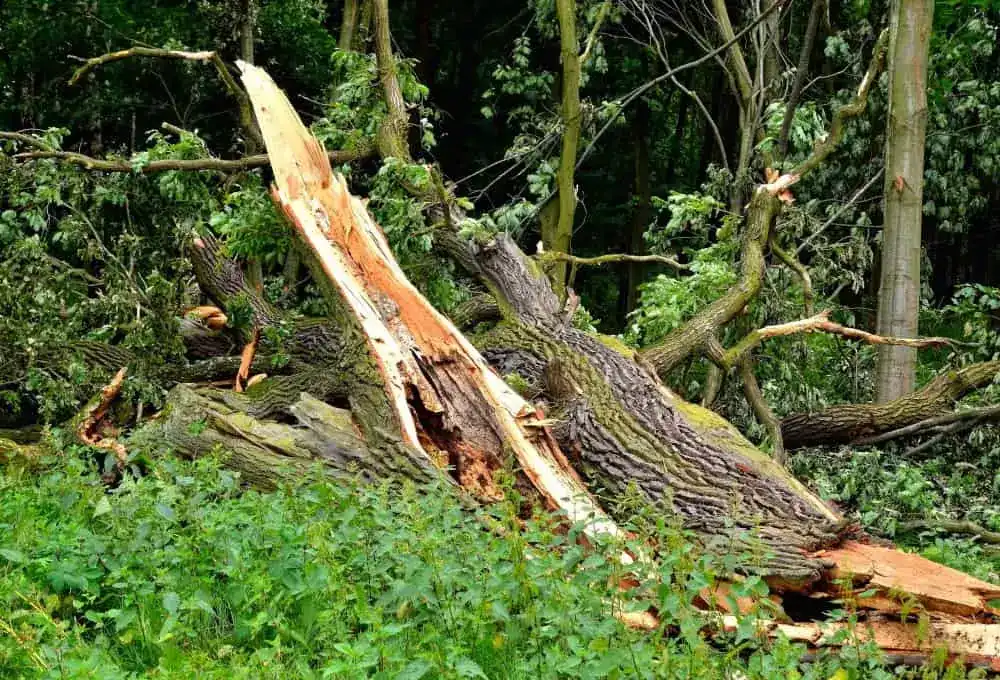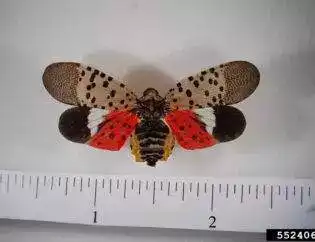
Lightning strikes a huge number of urban trees each year.
Recent storms in the Chicago area have shown that there are no shortcuts to tree maintenance or prevention techniques.
Tree Inspection Or Removal Quote
Can a tree survive a lightning strike?
Yes. It depends on where the tree stores most of its water content, if the tree's bark is soaked on the exterior or if it has a lightning protection system installed.
Lightning heats up the water inside a tree to the point where it turns into steam. The pressure generated by the steam can cause explosions inside the plant, damaging any affected parts. If most of the water content is kept immediately under the bark, or the tree exterior is soaked by rain, that water is going to act as an electrical conductor and divert the lightning away from the tree trunk interior.
Why are trees struck by lightning?
There are 2 main reasons why trees attract lightning during a storm:
- they are the tallest structures around, in some cases.
- a tree's water content and moisture are a better electricity conductor than the other elements around them, such as air.
Some tree species are more likely to be hit by lightning, up to 300%, also depending on their height and location. Some examples are oak, maple, pine, gum, sycamore and poplar trees.
What happens when a tree is struck by lightning?
The lightning can generate a temperature of up to 54,000F. About half of the trees struck die instantly, depending on where most of the moisture is stored on or in the tree. Other trees end up damaged and need extensive tree care that may or may not save them.
It is never recommended for people to take shelter under a tree during a lightning storm as the tall plants are more likely to attract a direct hit. People sitting within a couple of feet of an individual tree are at risk of a "side flash". The person sitting to closely acts as a short circuit and a portion of the electric current is being directed through their body. Other hazards are fire, and being hit by torn wood.
How to tell if a tree has been hit by lightning?
The obvious signs are if parts of a tree are burning, if pieces of the bark have been blown away by the steam, if the tree has vertical scars or it is charred in places.
In some cases, the damage might be hidden if it is internal.
However, it is still very dangerous to both your plant and your property as it might be slowly affecting its structural integrity. If you even suspect that your tree has been struck by lightning, or if you can see small signs such as scars on the bark, your best option is to contact an arborist. An ISA certified arborist is trained to detect such issues and might save you a lot of money and prevent potential damage to your property by mitigating the risk immediately.
Root System Damage
The strike might also cause root damage, without any other obvious signs. The leaves might start to wilt and the damage to the root system might the kill the plant in just a few days.
As a rule of thumb, if the tree survives until the next spring, when the growing season starts, it has much higher chances of recovery.
What do you need to do after a tree gets damaged by lightning?
Try to keep your distance, if possible. If the tree is burning, you might want to call the fire department. There still might be some residual electrical charge and, in the case of urban trees, they might be hiding exposed power lines.
If the entire tree has been irreparably damaged, then tree removal is the only option and it should be done asap to prevent parts of the struck tree from falling over.
A lightning strike might also affect a tree's structural integrity, even in the cases when the damage is not immediately visible and there are no external symptoms.
After you are sure that there is no hidden damage or hazards, this is what you can do to try to save the damaged tree:
- help the plant make up for the moisture lost by supplying lots of water.
- fertilize the tree. The fertilizer, together with the additional water will encourage quicker recovery and new growth.
- prune dead and broken branches, without going overboard.
- inspect the tree for exposed wounds as these might attract pests and tree diseases.
- monitor its health regularly to see if there are any hidden issues.
Lightning Protection System & Service
A lightning protection system, composed of a rod, copper cable and a grounding system will slowly release and dissipate the electrical current. This way, the lightning discharge is directed away from the tree and into the earth, where it dissipates.
Conclusion
There are a lot of ifs and mights when it comes to lightning and tree safety. The best course of action is to stay away during and immediately after the event and call a tree expert if you have any doubts about the tree's health. Progressive Tree Service offers 24 hour emergency tree service and our team has extensive experience working during extreme weather conditions.










You must be logged in to post a comment.